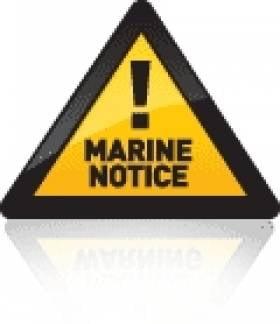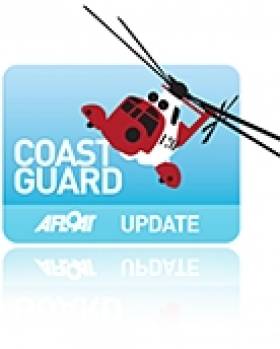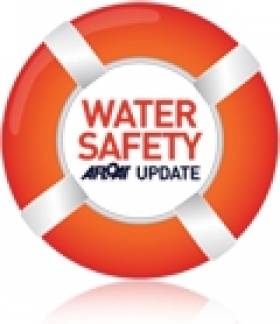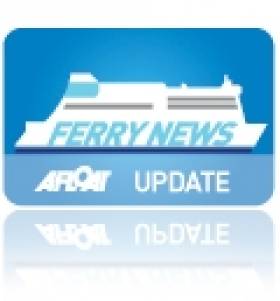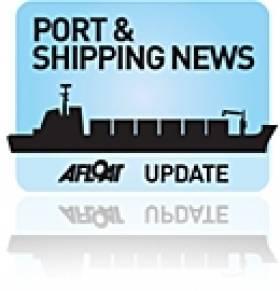Displaying items by tag: Department of Transport
Head of Maritime Services - Department of Transport
The Department of Transport has responsibility for delivery of an accessible, efficient, safe and sustainable transport system that supports communities, households and businesses.
Ireland’s marine footprint extends to more than 10 times our land mass and the marine sector plays a central role in our economic and social development.
We are now looking for an exceptional individual to lead Ireland’s Maritime Policy and Service Delivery at the Department of Transport, to drive and deliver Government policy. As a key member of our Management Board, the person we seek will have the skills necessary to make a real impact across the full range of issues relating to this sector.
This requires the ability to:
• lead the design of innovative, evidence-based policy to promote efficient, safe, secure and sustainable maritime transport;
• oversee a framework of port companies operating within the national transport chain of port services which are efficient, effective and adequate for the needs of our trading economy;
• lead and manage the Coast Guard function across a range of administrative, professional and technical grades;
• lead the delivery of an extensive legislative programme to support regulation of merchant shipping, maritime safety and ship source pollution, living and working conditions of all Irish ships and crew;
• represent the Department at the most senior levels in Government and in engaging with industry and the agencies under the remit of the Department;
• represent Ireland’s interests in the development of international maritime transport policy.
The successful candidate will;
• have a proven record of leadership and achievement at a senior level that demonstrates the necessary vision, leadership, governance and management skills;
• demonstrate the capacity to work collaboratively and contribute strategically to the overall leadership and future development of the Department;
• have a proven ability to deliver change initiatives including people management and performance improvement; and
• demonstrate excellent communication and people management skills, including the ability to network effectively, both internally and across the Sector.
If you feel you would benefit from a confidential discussion about this role, contact Eamonn Purcell at [email protected]
For more information and how to apply, visit: https://bit.ly/Afloat_Art_HdMaritime
The closing date for receipt of completed applications is 15:00 on Thursday 6th of January, 2022.
We are committed to a policy of equal opportunity and encourage applications under all nine grounds of the Employment Equality Act.
Passenger Ship Tendering Requirement Details
#tender – The Department of Transport, Tourism and Sport wishes to advise Shipowners, Ship Operators, Shipmasters, Harbour Masters and Ships' agents of the requirements for passenger ships engaged in the tendering of passengers between the ship and shore.
All tender vessels must comply with the relevant provisions of the Merchant Shipping Acts. There are two main types of tendering as follows:
(a) Passenger Ships using ship's own tender vessels;
(b) Shore based domestic tender.
Considering each as follows:
(a) Ship's Own Tender Vessels – International Cruise Ships
It may be necessary for a ship to use its own tenders in cases where suitable berthing facilities are not available, or where the ship's draft or size prevents it from entering a port. This is permissible under the Merchant Shipping Act 2010 which sets out the requirements to be followed.
Proposals must be in compliance with the provisions of the Merchant Shipping Act 2010 and the IMO Guidelines for Passenger Ship Tenders as contained in IMO circular MSC.1/Circ.1417.
• There must be adequate manning on the bridge to ensure that the tendering operation is continuously monitored.
• Tendering operations are not to be carried out in restricted visibility.
• The ship and its tenders must maintain a continuous listening watch on VHF Channel 16 and the port working channel at all times during the operation.
• The ship must have the approval of the port(s) in which any operations are to take place.
(b) Using Shore Based Tender Vessels – Domestic Passenger Ships/Boats
All such tender vessels must comply with the Merchant Shipping Acts and hold a current valid passenger ship safety certificate or passenger boat licence.
Domestic Passenger ships/boats are to be moored to a single point mooring for the duration of the transfer. Such moorings are to be licensed by Coastal Zone Management (Foreshore Unit, Department of the Environment, Community and Local Government), and must not be located such as to cause obstruction to other vessels. Owners must ensure that such moorings are inspected on an annual basis.
Domestic Tendering operations will normally only be permitted for the summer period comprising of June, July and August and is subject to annual review.
Application Procedure
The owner or master of a ship who proposes to undertake a tendering operation at any place in the State, in respect of that ship, must apply to the Marine Survey Office for a permit to undertake such operation by submitting for approval a "Tendering Operations Safety Plan Proposal" in the format laid out in the Annex to this notice. An application for a permit to tender should be submitted 28 days before the date of the proposed tendering, to allow sufficient time for the proposal to be assessed.
The Marine Survey Office may withdraw a permit to carry out tendering operations where there is a failure to comply with the conditions of the permit.
This Marine Notice supersedes Marine Notice No. 12 of 2013.
Irish Maritime Administration,
Department of Transport, Tourism and Sport,
Leeson Lane, Dublin 2, Ireland.
18/02/2014
Encl.: Annex
Annex to Marine Notice No. 19 of 2014
MARINE SURVEY OFFICE
TENDERING OPERATIONS – SAFETY PLAN PROPOSAL
Operators:
Address:
Proposed tendering location:
Period of tendering proposed:
Description of proposed operation:
Insurance company details:
Nominated company official responsible for tendering operation:
Tendering Craft Details:
Type/names of vessels:
Number of tenders:
Is the tender a SOLAS approved Lifeboat as per MSC.1/circ.1417:
Materials of construction:
Number of crew in tender:
Maximum number of passengers in tender:
Propulsions Means / KW:
Number of lifejackets/buoyancy aids available for passengers:
Luggage transported separate to passengers, yes or no:
Tender Safety Certificate attached (last service inspection for Rib/Zodiac type boats)
Passenger Ship Details:
Name of ship(s):
Offshore mooring facilities available (give GPS co-ordinates):
Expected distance from vessel to shore:
Maximum number of passengers:
Means of berthing tender alongside:
Access means to board passenger vessel (ladder, ramp etc):
Means of embarkation from ashore, e.g. Slipway, steps, pontoon etc
Wind conditions:
Maximum wind conditions for tendering operation as per risk assessment for operation
Wave / Swell Height:
Maximum operational swell height for operation
Alternatives due to suspension of tendering:
Alternative proposals for suspension of tendering operations, i.e. Stranded passengers
Disabled passengers:
Disabled / special needs passengers – tendering operation arrangements:
Lifejackets/PFDs
SOLAS lifeboat type tenders – Where lifejackets are not worn but stowed in tender, has a risk assessment been carried out or is an ISM procedure in place?
Emergency Assistance
What emergency assistance is available for a tender in difficulty?
IMO Guidelines (not applicable to certified domestic passenger ship/boats)
Please confirm that the tender vessel and operation comply with the requirements of IMO circular MSC.1/Circ.1417
Safety Announcements:
Safety announcement to passengers:
1. Prior to boarding tender from pier, yes or no:
2. Prior to disembarking tender, yes or no:
3. Prior to embarking tender from passenger vessel, yes or no:
Operational records:
Method of keeping tendering operation records:
To include details of: dates & times of tendering, no. of trips and passenger numbers carried by each tender, name of passenger vessel embarking/disembarking, prevailing weather & sea state conditions
Proposed tendering dates:
Dates Operational times
1.
1.
2.
2.
3.
3.
4.
4.
5.
5.
6.
6.
7.
7.
Additional actions proposed by operations:
When completed, this form should be returned to:
Marine Survey Office, Department of Transport, Tourism and Sport, Leeson Lane, Dublin 2.
Review of Rosslare Could Lead to Change of Ownership
#ROSSLARE - The Department of Transport has tendered for external consultants to carry out a strategic review of Rosslare Europort, the Co. Wexford harbour which is predominantly a ferryport is currently operated by Irish Rail, the Irish Times reports.
The advisers will be asked to review the port's current commercial and operational efficiency and advise on an appropriate ownership structure.
This could include local authority involvement or some form of privatisation. It is understood the Government would prefer to retain Rosslare in state ownership, given its importance to tourism and trade.
Doolin May Soon Get New Coastguard Station
The Irish Examiner reports that the Doolin coastguard unit is finally set to get a new coastguard station.
One of the busiest search and rescue units in the State, the Doolin unit of the Irish Coast Guard currently has to drag its boat some 2km by tractor to Doolin pier.
Much to the delight of local campaigners, the Office of Public Works is now inviting tenders for a €1.9 million dedicated coastguard facility at the pier, following the granting of planning permission by Clare County Council as part of a development plan for the area.
However, the unit's officer in charge Mattie Shannon is cautious about a start date for construction, as the Department of Transport will not be able to provide funding for the project until next year at the earliest.
Fianna Fáil TD for Clare Timmy Dooley told the Examiner: "The least the current Government can do is honour the commitment of the previous government and ensure that the appropriate finances are in place for next year."
The Irish Examiner has more on the story HERE.
Fastnet Yacht Capsizes Off Cork Coast - Latest
A US entrant in this year's Rolex Fastnet Race capsizsed near Fastnet Rock off the Cork coast earlier this evening, The Irish Times reports.
Further to our previous report, The Irish Times notes that 22 people were on board the Rambler 100, which overturned in force-five winds at around 6.30pm this evening.
The Department of Transport confirmed that all crew have been accounted for, with 16 sitting in the hull of the boat and the remainer on life rafts.

Rambler 100 rounds the Fastnet Rock. Photo: Daniel Forster/Rolex
RNLI Baltimore's lifeboat and the Irish Coast Guard are currently attending. Coastguard helicopters have also been dispatched, with naval vessel LE Clara giving assistance. The rescue effort has been hampered by misty conditions in the area this evening.

Baltimore lifeboat at the scene of the capsized Rambler 100. Photo: Carlo Borlenghi/Rolex
Rambler 100 recently set a new world record for the almost 3,000-nautical mile transatlantic crossing from Newport, Rhode Island to Lizard Point in Cornwall with a time of 6 days, 22 hours, 8 minutes and 2 seconds.
In other Fastnet action, there was disaster in IRC Z this afternoon for co-skippers Karl Kwok and Jim Swartz’s Farr 80 Beau Geste (HKG).
The yacht suffered a ‘structural problem’ while mid-away across the Celtic Sea en route to the Rock. She has since turned her bow back towards Land’s End.
Yesterday there was another high profile retirement when Johnny Vincent’s TP52 Pace (GBR) returned to her berth in the Hamble with mast problems.
In the Class 40s John Harris’ GryphonSolo2 (USA) has also pulled out, retiring to Dartmouth with sail damage.
- Fastnet
- Cork
- Rolex Fastnet Race
- Lifeboat
- Coastguard
- Irish Coast Guard
- Transatlantic
- Hamble
- Search and Rescue
- Fastnet Rock
- Department of Transport
- world record
- Helicopter
- 2011
- capsize
- TP52
- Land's End
- Rambler 100
- RNLI Baltimore
- IRC Z
- Kark Kwok
- Jim Swart
- Farr 80
- Beau Geste
- Johnny Vincent
- Pace
- John Harris
- GryphonSolo2
- Dartmouth
- Class 40
Mariners Advised on West Coast Seismic Survey
The Department of Transport's latest marine notice advises seafarers off the west coast to keep a lookout while a 3D seismic survey is conducted over the next three weeks.
The vessel M/V Ramform Vanguard that will carry out the work will be towing 10 streamers 6km long and will have a minimum turning radius of 3km.
Due to this restriction in manoeuvrability, all boats in the area are requested to give the vessel a wide berth.
The vessel's planned locations are listed in the PDF of Marine Notice No 24 of 2011, which is available to read or download HERE.
E-mail Changes for Department of Transport
The Department of Transport's latest marine notice reminds all bodies and individuals who have dealings with the department that it has now been renamed as the Department of Transport, Tourism and Sport.
As a result of this, all departmental e-mail addressed have been changed, and will now end with dttas.ie. E-mail spam filters may need to be updated to reflect the new change to continue sending or receiving e-mails from the department.
A PDF of Marine Notice No 20 of 2011 is available to read/download HERE.
Corrib Drilling Advisory to Vessels
The Department of Transport's latest marine notice advises on the start of offshore drilling operations by Shell Ireland at the Corrib gas field in Co Mayo.
Drilling is scheduled to begin on or around 13 April, to last for approximately four months. The notice gives details of all planned locations by latitude and longitude.
A safety zone is in place around the gas field development, and all vessels - especially fishing boats - are requested to give the drilling unit a wide berth of at least 500m and keep a strong lookout in the vicinity.
A PDF of Marine Notice No 19 of 2011 is available to read/download HERE.
Passenger Ship Obligations to Assist in Search & Rescue
The Department of Transport's latest marine notice pertains to the requirements for passenger vessels in assisting with search and rescue services.
All passenger ships on international routes - such as ferries and cruise liners - are obliged to have a plan for co-operation with search and rescue operations should their assistance be needed.
The notice outlines that any plan should be developed between the ship itself, the ship company and the Irish Coast Guard. Plans must also be drilled periodically to test their effectiveness.
Ship owners and masters are also obliged to give an indication of the existence of their co-operative rescue plans by way of SeaSafeIreland (SSI) notification. Should that not be possible, the Marine Survey Office of the Department of Transport must be notified directly.
A PDF of Marine Notice No 18 of 2011 is available to read and download HERE.
Reporting Inadequate Facilities for Handing Ship-Generated Waste
The Department of Transport's latest marine notice lays out the format for reporting inadequate harbour facilities for handling ship-generated waste.
Shipping companies depend on good standards at receiving ports and harbours in order to comply with the relevant EU directive. But the notice outlines that improvement of port facilities' waste handling is partly dependent on users reporting any inadequacies.
The notice includes the International Maritime Organization's standard format for reporting unsatisfactory port reception facilities.
For all ships, reports should be sent to the relevant port authority as well as the Ship-Source Pollution Prevention Section of the Department of Transport. Non-Irish flagged ships in Irish ports should also send any reports to the ship's flag state.
A PDF of Marine Notice No 17 of 2011 can be viewed/downloaded HERE.


























